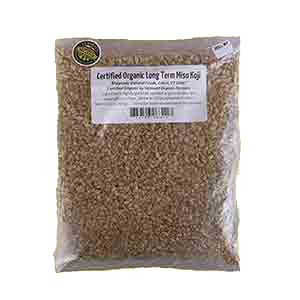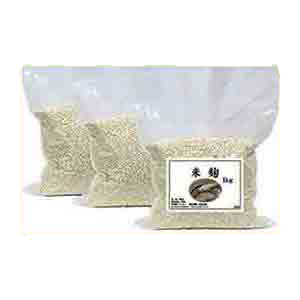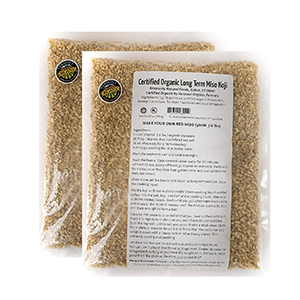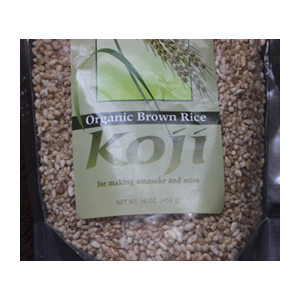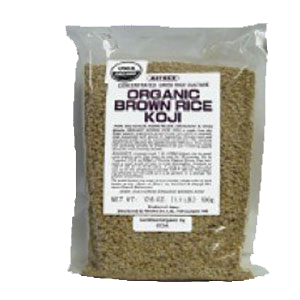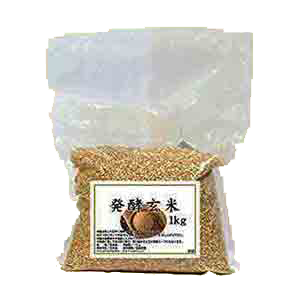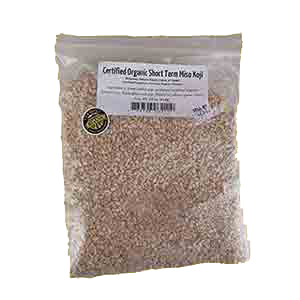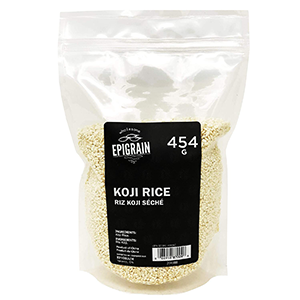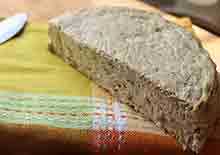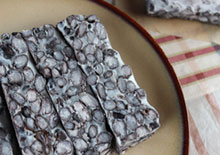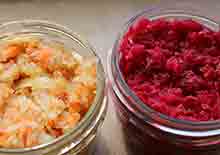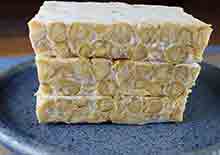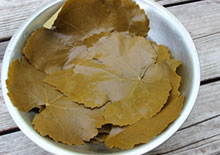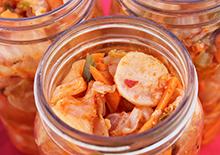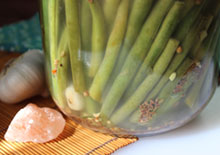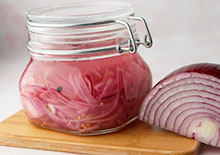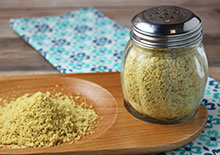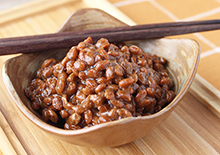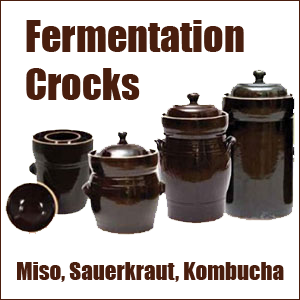- Home
- Fermented Food Recipes
- Decanting Homemade Miso
Decanting Homemade Miso Paste, A Long-Term Black Bean Variety
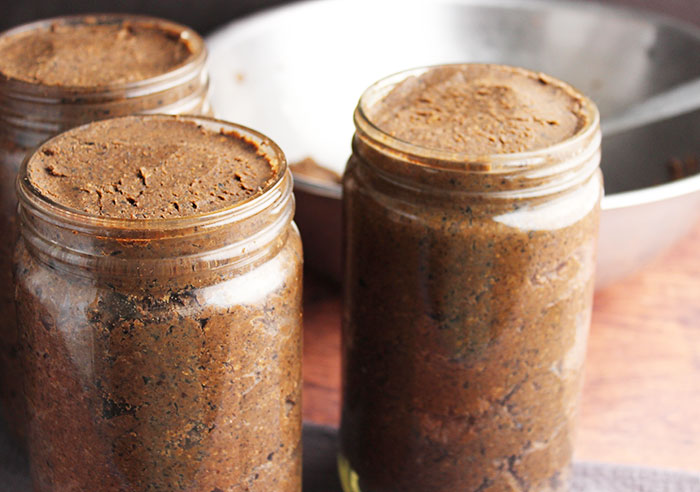
So, you've made your own miso paste, maybe using our black bean miso recipe, and are now ready to look inside the crock after a long waiting period. Congrats, good job!
You might like to also head over to our Homemade Miso Paste, Decanting an American-Style Red Miso for more specifics on the decanting process, or read on for additional tidbits and our personal process.
After a full two-years, we finally opened our black bean miso and here we will share the end results, plus more information about koji selection.
We made the miso in February of 2017 and decanted it in March of 2019. So, technically it had gone through two summer seasons and can be can officially considered a 2-year miso.
It was aged in a 5-liter German style fermentation crock using stone weights and in a natural atmospheric temperature that was not artificially heated or air-conditioned.
We opened it a year earlier to taste test and decided to keep on going for one more season.
But this year it was ripe and ready, and we pleasantly discovered that our patience paid off.
Taste of Black Bean Miso After 2-Year Fermentation
Upon our first tasting, and now many tastes afterward, we feel very happy with how the miso aged and developed in flavor.
We've mostly experienced making 1-year American-style varieties in our relatively short 20-year career of miso making. This 2-year variety definitely was a little less salty than previous types we've made over the years.
Of course, different legumes are also going to have subtly different taste qualities which are sometimes hard to describe in words. Compared to our garbanzo bean recipe, which we've made many times, this black bean miso seems to have a richerearthier taste but less sweet flavor than garbanzo (chickpea).
The color is also a darker brown compared to the golden paste of garbanzo bean.
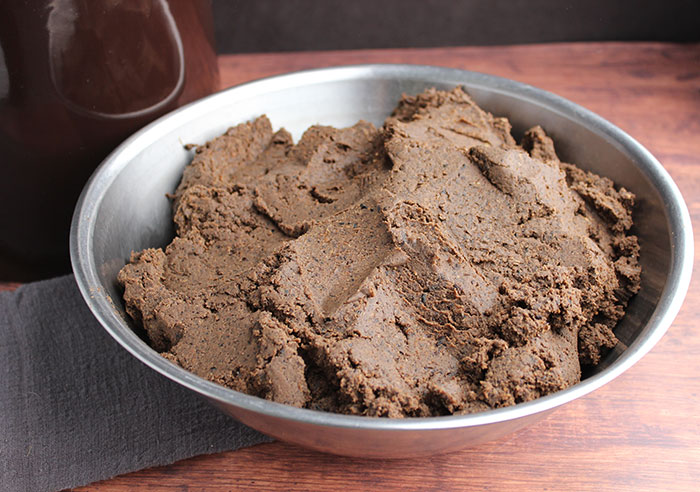
Quantity of Paste When Decanting Homemade Miso
Learn more about miso on our miso page.
The immediate aspect that we noticed upon removing the lid was that it had shrunk quite a bit, a little more than our 1-year miso. So, we ended up with about one quart jar less.
However, miso is known to increase in health-enhancing nutrients the longer that it ages, so "less it more" so to speak.
There is some scientific research that long-term miso has greater health benefits over short-term miso and according to one study "prolonged fermentation appears to be very important for protection against radiation effects."
We packed a total of 3 quart jars (or about or 96 ounces) and one pint (16 ounces). So, if you think in terms of what you would spend for the same amount of quality commercial miso (here in the U.S. anyway)... that would be 63 dollars for ths same amount of organic miso, currently priced at about 9 dollars per 16 ounces.
The cost can vary when making it at home, but we estimated that it averages between 30-40 dollars depending on the koji you purchase.
So, there is still some saving in DIY miso, but not as much when it is aged longer as you get less quantity.
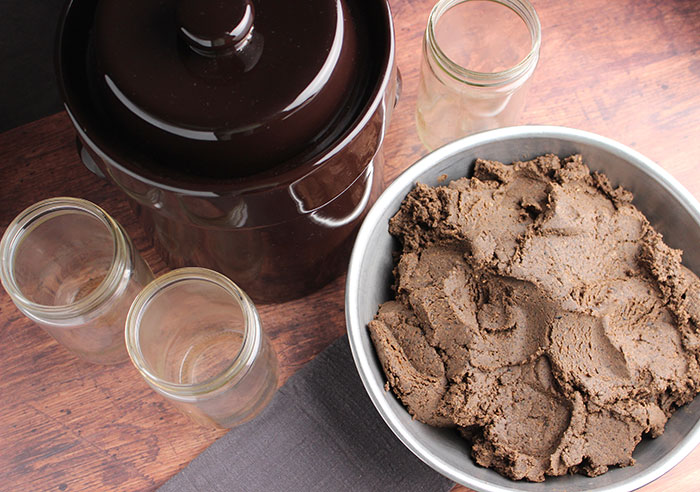
The Steps in Our Decanting Process
We washed and dried about 4 mason jars, several bowls and 2 large spoons to have on hand for direct transfer of the paste.
From start to finish, these were the steps involved:
- Remove the lid, take out the fermentation weights.
- Remove the first layer about an 1/2 inch or so. Ours had a slight amount of mold growth (very normal) and was much drier than the paste below. This layer also had a slightly sour smell in contrast to the more appealing scent just below it.
- We taste tested the second layer of paste. Yes, it had a wonderful tamari-like aroma and it also had a great miso rich flavor! Success!!
- Spoon out the miso from the center and keep moving outward toward the edge of the crock. We stopped at about 1/2 inch from the sides, when it began to have a different texture.
- We proceeded to remove the paste all the way down to the bottom of the crock, placing the good miso in one bowl and the other less attractive in another to discard.
- Next, the good miso was packed into one quart (32oz) mason jars.
- We put wax paper on the top and used a plastic (non-metallic) lid.
Caution: Just to mention, surface mold development when fermenting foods like miso is very common and is usually scrapped off. However,.for those with mold allergies, you may want to avoid consuming homemade ferments especially if you have severe allergic reactions.
Tip When Storing Decanted Miso Jars
Obviously, you may not be able to store all your jars in a refrigerated location.
When unrefrigerated the miso can continue to ferment, so if you're not refrigerating your decanted jars, you may want to leave an inch or so space at the top just in case gas build-up occurs.
We have personally never had unrefrigerated jars explode but have heard stories that it can happen. It's also best to occasionally loosen the lids to assure any potentially trapped gases can escape.
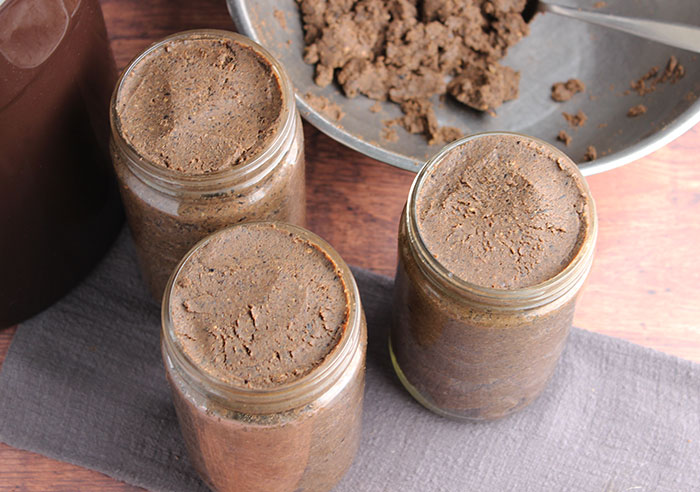
A Word About Koji
To ferment miso you need one key ingredient besides beans and that is a koji culture starter which has been inoculated with the spores of Aspergillus oryzae.
This is a fungus (a mold) that grows on a substrate, commonly polished rice, and produces the mycelium-bound grain product called koji. Koji is a dried material and can be stored in airtight packaging and used for future ferments. This includes miso, but koji is also used to ferment other foods and drinks like sake, amazaké and soy sauce.
In the United States, access to koji starter cultures is currently (as of 2019) very limited to a few online suppliers. In Asian miso-making countries, of course, you would have a much wider variety to select from as they have perfected miso making as an artisan craft over many generations.
Just like other starter cultures used to make other fermented foods, like kefir and tempeh, you also have special strains or subspecies of the Aspergillus oryzae. Some of which have been discovered, probably after over many centuries of experimentation, to be better for certain types of miso making. For example, in Japan there are many types of miso unique to specific locations, each likely utilizing their own particular strains of the species Aspergillus oryzae.
Koji Selection in Non-Asian Countries
If you don't happen to live in a location with access to traditional artisanal varieties, there are only a handful of online suppliers to choose from. (Asian markets can sometimes be another resource.)
For modern American-style miso, using other legumes beside soybean,
generally you can use a basic koji rice starter. We typically use an
organic brown rice koji.
Note: One thing that we have noticed with this non-traditional variety is that it may not always breakdown completely in your final product. This in effect means that when decanting homemade miso you will notice bits of koji even though there are signs that the miso is fully aged. When researching information on this, we found that Sandor Katz, author of the Art of Fermentation, suggests puréeing the paste in a food processor before packing it for storage.
Other options when selecting the best koji for your miso-making objectives include:
- Kome Koji - koji for long-term (over 6-months)
- Shio Koji - short-term (under 6-months)
Short-term is often used for a "sweet miso" which is only aged between 4-12 weeks.
So, depending on your miso-making objective, you can also choose either type for specific variations. These are both available from online suppliers.
Shop Related Products (About Affiliates & Amazon Associate Paid Links)
Affiliate Disclaimer: This section contains affiliate product links. If you make a purchase through our recommended links, we receive a small commission at no additional cost to you. Thanks for the support.

